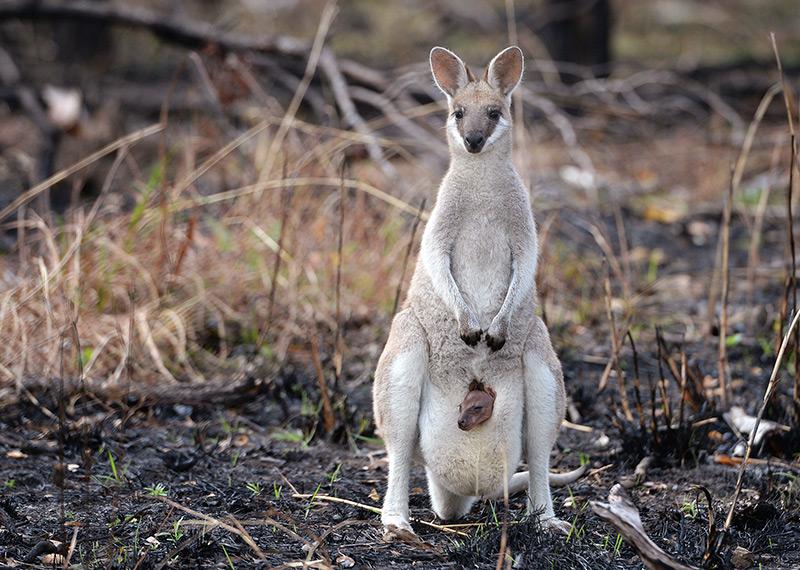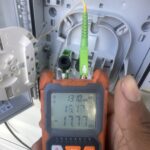So, you’re wondering what measures are in place to ensure the safety of wildlife during bushfires, huh?
Well, let’s dive into this pressing topic and explore some of the strategies being implemented.
From controlled burns and fire management techniques to the creation of wildlife corridors, there are various approaches being taken to protect our furry and feathered friends.
But that’s not all! Emergency water and food sources, early warning systems for wildlife evacuation, and even rescue and rehabilitation efforts for injured animals are part of the equation.
So, strap in and get ready to learn how we can safeguard our precious wildlife in the face of these fiery challenges.
Controlled Burns and Fire Management
Controlled burns, also known as planned fires, have long been utilized for various purposes such as hunting, plant growth, and cultivation. They play a crucial role in reducing the risk of bushfires near populated areas and supporting biodiversity.
These intentional fires are an essential tool in fire management strategies. They help create firebreaks and reduce fuel loads, thereby minimizing the intensity and spread of wildfires. By conducting controlled burns in strategic locations and at appropriate times, fire managers can create a buffer zone that acts as a barrier, protecting communities from the devastating impacts of bushfires.
Moreover, controlled burns contribute to the preservation of biodiversity by maintaining unique habitats for plants and animals. Bushfires create a mosaic of different vegetation types, which in turn support a diverse range of species. Some plants and animals have adapted to the post-fire environment and rely on the regrowth of vegetation after a fire. By incorporating controlled burns into fire management plans, land managers can mimic the natural fire regime and ensure the persistence of these fire-adapted species.
However, the increasing frequency and severity of bushfires due to climate change pose new challenges for fire management. Traditional fire management practices, informed by Indigenous knowledge, are being recognized for their effectiveness in supporting biodiversity and reducing greenhouse gas emissions. These practices involve patchy burns, which create a diverse pattern of burned and unburned areas, allowing for a greater variety of habitats to develop.
Creation of Wildlife Corridors
To ensure the safety and conservation of wildlife in the face of increasing bushfire frequency and severity, the establishment of wildlife corridors is a vital strategy that connects fragmented habitats and facilitates the movement of species between different areas.
Wildlife corridors play a crucial role in reducing the isolation of populations and promoting gene flow among species. By providing safe pathways for animals to move across landscapes, these corridors allow them to access essential resources such as food, water, and shelter. They also enable species to disperse and colonize new areas, which is particularly important for their long-term survival and adaptation to changing environmental conditions.
The creation of wildlife corridors requires a combination of land conservation, restoration, and the establishment of protected pathways across human-dominated landscapes. These corridors are carefully designed to meet the specific needs of different species, taking into account their habitat requirements, movement patterns, and ecological interactions. They often involve the restoration of natural vegetation and ecosystems, which not only benefits wildlife but also enhances ecosystem functioning and resilience.
Establishing wildlife corridors is a collaborative effort that involves various stakeholders, including government agencies, conservation organizations, and private landowners. It requires cooperation and coordination to identify suitable locations for corridors and to implement management practices that ensure their effectiveness. Monitoring and research are also crucial components of corridor establishment, as they help assess the success of conservation efforts and inform adaptive management strategies.
Emergency Water and Food Sources
Ensure the availability of safe and clean water, as well as appropriate food sources, for wildlife in emergency situations such as bushfires. After a bushfire, it’s crucial to provide wildlife with access to water to prevent dehydration and promote their survival. It’s recommended to change the water daily to prevent the spread of diseases. To accommodate different species, water containers should be placed at ground level and elevated in trees, using shallow, robust, and stable containers.
In addition to water, short-term supplementary feeding may be necessary for wildlife until the natural environment recovers. It’s important to offer the right food for different species and always provide fresh water alongside it. However, it’s essential to note that specialist animals or endangered species shouldn’t be fed by individuals. Feeding these animals should be left to experts who have the necessary knowledge and expertise. Supporting them through donations to the Wildlife Recovery Fund is a great way to contribute.
When providing food for wildlife, it’s important to consider the potential risks. Overfeeding can lead to health issues such as obesity and malnutrition, as well as increase the risk of predation and disease spread. If you come across animals in distress, it’s advisable to seek advice from a trained wildlife rescuer or veterinarian. They can provide guidance on the appropriate course of action.
Early Warning Systems for Wildlife Evacuation
Early warning systems play a crucial role in ensuring the safe evacuation of wildlife from areas affected by bushfires. These systems can alert wildlife rescue teams and organizations to potential threats, allowing them to plan and execute safe evacuations. By using technology such as drones, cameras, and satellite imagery, wildlife movements can be monitored, and areas at risk can be identified. Collaborating with local communities and land managers is essential to establish effective communication channels for wildlife evacuation.
Training and protocols for wildlife rescue teams are also important in responding promptly to early warnings and facilitating the safe evacuation of wildlife. These measures ensure that wildlife is given the best chance of survival during bushfire events. Bushfire consultants play a pivotal role in advising on the integration of controlled burns and other fire management techniques to mitigate the impact of bushfires on wildlife habitats and populations.
To further illustrate the importance of early warning systems in wildlife evacuation, let’s take a look at the following table:
| Early Warning Systems for Wildlife Evacuation |
| – Alert wildlife rescue teams to potential threats |
| – Aid in planning and executing safe evacuations |
| – Monitor wildlife movements and identify areas at risk |
| – Use technology such as drones, cameras, and satellite imagery |
| – Collaborate with local communities and land managers |
| – Implement training and protocols for wildlife rescue teams |
Rescue and Rehabilitation Efforts for Injured Wildlife
Rescue and rehabilitation efforts for injured wildlife are essential in ensuring their recovery and successful reintegration into their natural habitats. When encountering injured wildlife, it’s important to seek advice from experienced carers if you lack the necessary skills or resources for their care. These experts can provide guidance on how to best handle and treat the injured animals, increasing their chances of survival.
In order to provide short-term care for injured animals, it’s crucial to obtain a Rescue Permit. This permit allows you to legally care for the injured wildlife until they’re ready to be released back into the wild. It ensures that you have the necessary authorization and knowledge to properly care for the animals, minimizing any potential harm or distress.
The IFAW Wildlife Rescue App can be a valuable tool in locating the closest rescue provider or vet for injured wildlife. This app provides a convenient way to access the necessary resources and support, ensuring that the injured animals receive the appropriate care as quickly as possible.
In addition to immediate care, it’s important to consider long-term solutions for displaced wildlife. Installing nest boxes can provide a safe and suitable habitat for animals that have lost their homes in bushfires. This proactive approach not only helps the displaced wildlife find shelter, but also contributes to their long-term survival and well-being.
Conclusion
In conclusion, implementing adaptive management strategies and promoting collaboration between scientists, land managers, and Indigenous communities are crucial in safeguarding wildlife during bushfires.
Monitoring and research to understand the impacts of climate change on fire and biodiversity, as well as integrating traditional ecological knowledge into fire management practices, are essential.
Additionally, investing in fire-resistant infrastructure and community education on fire safety are effective measures.
Interestingly, studies have shown that controlled burns can reduce the severity of bushfires by up to 70%, providing a valuable tool in protecting wildlife and promoting biodiversity.





